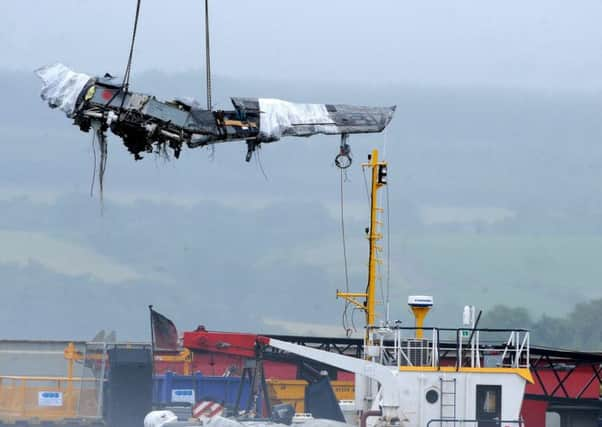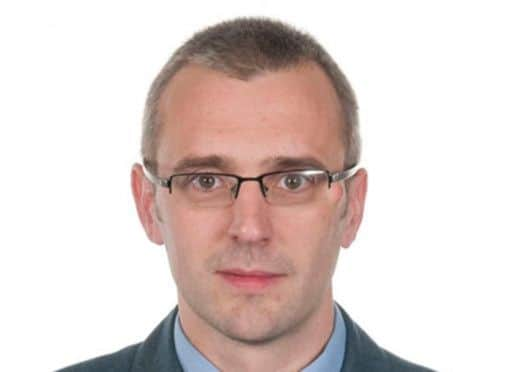Iraq veteran who died in air crash ‘feared flying’


The same investigation found that an onboard collision warning system could have helped prevent the collision between the two ground attack aircraft from RAF Lossiemouth, which were on separate training exercises over the Moray Firth.
The findings of the Military Aviation Authority (MAA) into the tragedy on 3 July, 2012, found there were 17 contributory factors, including the lack of a collision warning system (CWS), on both aircraft.
Advertisement
Hide AdAdvertisement
Hide AdFlight Lieutenant Hywel Poole, 28, Flt Lt Adam Sanders, 27, and Squadron Leader Samuel Bailey, 26, died in the crash. A fourth crewman, Squadron Leader Paul Evans, was badly injured.


The report said the weapon systems operator (WSO) who had a fear of flying was in the rear seat of his jet with a student pilot when it collided with the other aircraft. While not named in the report, he is understood to have been Sqn Ldr Samuel Bailey, an experienced instructor who had previously served in Iraq.
He had sought help for his condition, the MAA report said.
It added that in April 2012, the WSO said he had reached a “crisis point” and “could not face flying”. He was diagnosed with a phobic anxiety disorder. The WSO stopped flying for a time, before returning to the cockpit.
The report said on the day of the accident, the jet he was in made a “rushed” descent to low level and this was done in “marginal weather” conditions.
While there was no evidence that the WSO’s anxiety affected his decision-making, the report said his decisions were “not commensurate with his recognised experience and professional standing”.
The MAA investigators concluded the cause of the accident was “a lack of recognition of converging flight paths” which led to both aircraft being in the same airspace at the same time.
In a detailed 278-page report, published yesterday by the Ministry of Defence (MoD), poor weather conditions and “shortcomings” of the risk management process were among some of the other 16 factors listed.
An MoD spokesman said the investigation found the lack of a CWS did not cause the accident but was one of a number of factors which made it “more likely to happen”. MAA director general Air Marshal Richard Garwood said: “Tragically, there were many opportunities to enable de-confliction but, for a number of reasons, including chance, this did not happen. Unfortunately, the final safety barrier which would have generated awareness of their close proximity did not exist as the Tornado GR4 is not fitted with a CWS.”
Advertisement
Hide AdAdvertisement
Hide AdMeanwhile, an onboard collision warning system would have helped to prevent the Tornado GR4s from colliding, the air accident investigators said.
Equipment designed to help fast jet pilots avoid mid-air collisions was recommended in the late 1990s.
A system with a cost of £53.46 million was approved in October 2012 and a contract for the work awarded in December that year. The rollout of the equipment is due to be completed by this year.
Moray SNP MSP, Angus Robertson, said: “It is scandalous that the MoD committed to a Tornado collision warning system in 1998, bizarrely cancelled it 12 years later, then changed its mind – but it was all far too late to potentially avert the fatal crash in 2012.
“This makes the tragic event of July 2012 even more distressing. The report highlights the delays of installing the system were financially driven. This is utterly unacceptable and a breach of the duty of care we rightly expect the MoD to provide and our service personnel to have.”
SEE ALSO